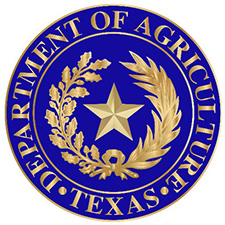(AG Insider) As 2022 comes to an end and with the Holidays fast approaching our planet in worse shape than it’s ever been.
The challenge of slowing global warming and the environmental, economic and social devastation underway can sometimes feel like too much — too expensive, too complicated and too politically divisive to overcome.
That sense of futility isn’t an accident. The fossil fuel industry, global agribusiness and their political handmaidens have worked hard to create it. Their profits depend on convincing people that protecting the environment is too costly, or that the need is too uncertain.
Farmers and their rural neighbors, in particular, have been told that environmental “extremists” want to over-regulate their farms and destroy their way of life.
But when we wake up every morning we aren’t filled with despair. We’re filled with hope in a revolutionary idea: that farmers will help mitigate climate damage if we pay them to make their operations more resilient and sustainable.
Given economic incentives to encourage innovation, farmers would integrate ecosystem services—from decreased tillage and managed grazing to increased crop diversity, permaculture and clean energy—with their crop and livestock production. This would be done on a whole-farm basis, and not as conservation carve-outs.
Along with related innovations in energy, construction, transportation and resource management, paying farmers to help solve the climate crisis has the potential to make the next 50 years among the most hopeful in the history of humanity.
The need is glaring. Farming, deforestation and other land-use practices account for more than 10 percent of greenhouse gas emissions in the United States, and roughly a third of all emissions worldwide.
Many in rural America worry that the solutions to this problem will be developed by others and dictated to them.
For decades, the dominant model in row crop and livestock agriculture has been exactly that: farmers adopt innovations developed by agribusiness, and use the efficiencies these innovations deliver to keep increasing the scale of their operations.
Get big, or get out, they’re told. As a result, farmer-driven innovation has been largely removed from agriculture.
Reversing this one-way street, and turning farmers into disruptors, is important. With proper incentives, farmers can transform rural communities all across our nation, creating new revenue streams and job opportunities and making it possible for the land to support more farmers, not fewer.
Commodity production requires increasing farm size. But if farmers can keep growing commodities and add ecosystem services to their farm plans, they can build their economic muscle without adding acres. This is how environmental solutions can emerge from rural America.
Using our nation’s agricultural land to deliver critical ecosystem services would enable these solutions to happen at scale — and quickly. If we pay farmers to do it, we believe they can get it done in 10-20 years, a similar timeframe as other big transitions in American agriculture, such as the shift to herbicide-resistant seeds or the development of integrated pork production.
In addition to stifling farmer innovation, modern agriculture also pits production against conservation. You can do one or the other, but rarely both on the same piece of ground. For farmers, conservation usually has an immediate cost but only a long-term benefit.
When a farmer invests in conservation, however, the benefits extend well beyond his farm to become part of the greater good.
In short, we all benefit. So paying farmers and ranchers for ecosystem services, like we pay them for commodity production, is an investment that could save trillions of dollars and countless lives.
For most farmers, profit margins are slim, and building systems to sequester carbon, heal our soil and improve habitat are expensive.
By integrating ecosystem services on a whole-farm basis as part of, and not apart from, commodity production, we unlock the power of farmers to deliver quantifiable public goods. If, for example, a farmer can get paid for adding a small grain to her rotation—a move that accelerates the cycles of carbon, nutrient, water, and biology in the soil—she’s likely to do so.
Similarly, she could install a solar array and establish pollinator habitat underneath. Or stop growing crops on a less productive field and manage it for habitat. But we have to make it economically viable for her to do so.
The big question is whether the political will exists to buck the status quo and empower farmers and ranchers.
President Biden has been saying since the primaries that we need to pay farmers to help solve climate change, and so far he seems serious about it. His administration is already pushing for a multi-billion-dollar “bank” to pay farmers for carbon sequestration.
We can use the same tools that help farmers grow corn, soybeans and other crops—loans, direct payments, subsidies, etc.—to help them integrate ecosystem services into their farming plans. Participation should be voluntary, for maximum buy-in.
Our research universities could work with farmers and ranchers to develop best practices in every state and territory. Farms of every size need to be engaged, from row crop farmers in Iowa to celery farmers in California to chile farmers in New Mexico.
The staff at the USDA’s National Resources Conservation Service, Farm Service Agency, and Rural Development could be directed to help farmers innovate as they merge commodity production with ecosystem services.
Farmers we have spoken to understand that this approach will help them implement conservation practices on their farms. Select groups that lobby for both farmers and the agribusinesses who profit from the status quo likely will try to oppose these changes.
Those groups will have to decide whether they are really on the side of farmers, large and small, or entirely invested in preserving corporate control of American agriculture.
The Green Revolution is over. It’s time to begin a new revolution, a Green Harvest, if you will, in which farmers around the world integrate ecosystem services with commodity production. The future requires that we leave fossilized carbon in the ground and instead use the carbon we grow on our farms, the wind that blows across our fields and the sun that shines on our land.
Just as we invest in commodity production, we need to invest in the environmental benefits that farmers can deliver with regenerative agriculture and clean energy. The question is no longer whether we need to change agriculture to solve the climate crisis, but rather who will drive those changes.
The promise of Earth Day depends on everyone doing their part. It’s time to empower farmers to do theirs.











